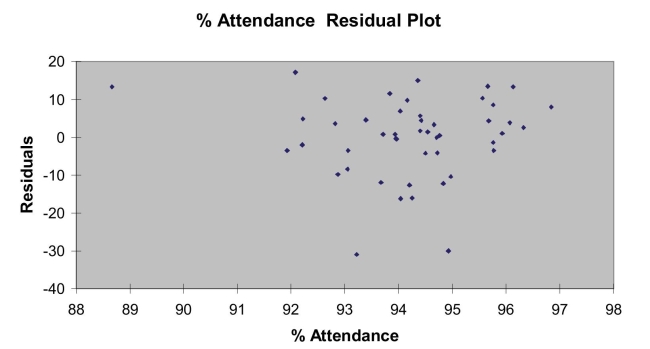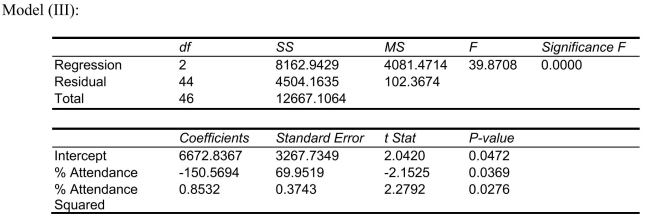True/False
SCENARIO 15-4 The superintendent of a school district wanted to predict the percentage of students passing a sixth-grade proficiency test.She obtained the data on percentage of students passing the proficiency test (% Passing), daily mean of the percentage of students attending class (% Attendance), mean teacher salary in dollars (Salaries), and instructional spending per pupil in dollars (Spending)of 47 schools in the state. Let Y = % Passing as the dependent variable,  Attendance,
Attendance,  Salaries and
Salaries and  Spending. The coefficient of multiple determination (
Spending. The coefficient of multiple determination (  )of each of the 3 predictors with all the other remaining predictors are, respectively, 0.0338, 0.4669, and 0.4743. The output from the best-subset regressions is given below:
)of each of the 3 predictors with all the other remaining predictors are, respectively, 0.0338, 0.4669, and 0.4743. The output from the best-subset regressions is given below:  Following is the residual plot for % Attendance:
Following is the residual plot for % Attendance:  Following is the output of several multiple regression models:
Following is the output of several multiple regression models: 


-Referring to Scenario 15-4, the quadratic effect of daily average of the percentage of students attending class on percentage of students passing the proficiency test is not significant at a 5% level of significance.
Correct Answer:

Verified
Correct Answer:
Verified
Q1: True or False: So that we can
Q15: SCENARIO 15-1 A certain type of rare
Q16: SCENARIO 15-3 A chemist employed by a
Q17: SCENARIO 15-4 The superintendent of a school
Q18: SCENARIO 15-6<br>Given below are results from the
Q19: SCENARIO 15-3 A chemist employed by a
Q21: SCENARIO 15-2 In Hawaii, condemnation proceedings are
Q24: Which of the following procedures in model
Q28: The Variance Inflationary Factor (VIF)measures the<br>A)correlation of
Q51: True or False: One of the consequences